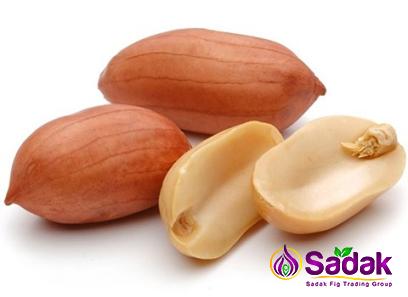Almonds, scientifically known as Prunus dulcis, are one of the most popular and widely consumed tree nuts worldwide. Almond trees are native to the Middle East and South Asia but are now cultivated in several regions globally. Not only renowned for their pleasant taste and crunchy texture, but almonds also boast an impressive nutritional profile that makes them a prominent choice for healthy snacking and as a versatile ingredient in various culinary applications. This article provides a comprehensive summary of the edible almond fruit, discussing its health benefits, culinary uses, and potential economic impact.
1. Nutritional Composition of Almonds:
Almonds are packed with essential nutrients, making them a healthful addition to a balanced diet. They are an excellent source of healthy fats, including monounsaturated and polyunsaturated fats, which are beneficial for heart health. Almonds are also high in dietary fiber, protein, vitamins (such as vitamin E and B vitamins), minerals (including magnesium, copper, and calcium), and antioxidants. The unique nutritional composition of almonds contributes to various health benefits.
2. Health Benefits of Almonds:
Consuming almonds regularly has been associated with numerous health benefits:
– Heart Health: Almonds have been shown to reduce the risk of heart disease by lowering LDL cholesterol levels and improving heart health markers.
– Weight Management: Despite their relatively high calorie content, almonds have been linked to aiding in weight management due to their satiating effect, which helps control appetite and prevent overeating.
– Diabetes Management: Almonds may play a role in stabilizing blood sugar levels and improving insulin sensitivity, thus benefiting individuals with diabetes.
– Bone Health: The combination of calcium, magnesium, and phosphate present in almonds contributes to maintaining healthy bones and preventing conditions such as osteoporosis.
– Skin and Hair Health: The vitamin E content in almonds assists in maintaining healthy skin and hair, providing nourishment and protecting against oxidative stress.
3. Culinary Uses of Almonds:
The versatility of almonds in culinary applications makes them a popular choice in various cuisines around the world. They can be consumed in several forms:
– Raw Almonds: Almonds can be eaten as a standalone snack or added to trail mixes and granola bars, providing a delicious and nutritious crunch.
– Almond Milk: Almond milk is a plant-based alternative to dairy milk, favored by vegans or those with lactose intolerance. It is used in various beverages, cereals, and smoothies.
– Almond Flour: Ground almonds, or almond flour, is a gluten-free alternative to wheat flour, commonly used in baking. It adds a rich flavor and moist texture to cakes, cookies, and bread.
– Almond Extract: Almond extract is a concentrated oil derived from almonds, adding a distinct nutty flavor to many desserts, chocolates, and baked goods.

– Almond Butter: Similar to peanut butter, almond butter is made by grinding roasted almonds until smooth. It makes for a nutritious spread on toast, in sandwiches, or as an ingredient in sauces and dressings.
4. Economic Impact of Almonds:
The global demand for almonds has been steadily rising, leading to significant economic impact in regions where cultivation is prominent.
– Agricultural Industry: Almond cultivation provides economic opportunities for farmers and stimulates employment in the agricultural sector. The almond industry also contributes to rural development in regions such as California in the United States, which is the world’s largest almond producer.
– Export and Trade: The global almond market continues to expand due to rising consumer demand, resulting in increased exports and trade activity. This benefits almond-producing countries by generating revenue and contributing to international trade balances.
– Value-Added Products: Alongside traditional almond products, the growing popularity of almond-based alternatives, such as almond milk and almond flour, has opened new avenues for value-added product development and diversification within the food industry.
– Environmental Impact: Almond cultivation requires substantial water resources, leading to debates over sustainability concerns, especially in water-scarce regions. Developing efficient irrigation methods and promoting sustainable farming practices are crucial to maintaining the long-term viability of the almond industry.
Conclusion:
Almonds are a versatile and nutritious fruit, offering a multitude of health benefits and culinary possibilities. As consumer interest in healthy snacking and plant-based alternatives continues to rise, the demand for almonds and almond-based products is expected to grow further. Harnessing the economic potential of the almond industry requires sustainable practices that balance agricultural productivity with environmental stewardship. Overall, the almond fruit stands as a testament to the remarkable combination of taste, nutrition, and economic significance.Title: The Nutritious and Versatile Almond: A Comprehensive Summary
Introduction:
Almonds, scientifically known as Prunus dulcis, are one of the most popular and widely consumed tree nuts worldwide. Almond trees are native to the Middle East and South Asia but are now cultivated in several regions globally. Not only renowned for their pleasant taste and crunchy texture, but almonds also boast an impressive nutritional profile that makes them a prominent choice for healthy snacking and as a versatile ingredient in various culinary applications. This article provides a comprehensive summary of the edible almond fruit, discussing its health benefits, culinary uses, and potential economic impact.
1. Nutritional Composition of Almonds:
Almonds are packed with essential nutrients, making them a healthful addition to a balanced diet. They are an excellent source of healthy fats, including monounsaturated and polyunsaturated fats, which are beneficial for heart health. Almonds are also high in dietary fiber, protein, vitamins (such as vitamin E and B vitamins), minerals (including magnesium, copper, and calcium), and antioxidants. The unique nutritional composition of almonds contributes to various health benefits.
2. Health Benefits of Almonds:
Consuming almonds regularly has been associated with numerous health benefits:
– Heart Health: Almonds have been shown to reduce the risk of heart disease by lowering LDL cholesterol levels and improving heart health markers.

– Weight Management: Despite their relatively high calorie content, almonds have been linked to aiding in weight management due to their satiating effect, which helps control appetite and prevent overeating.
– Diabetes Management: Almonds may play a role in stabilizing blood sugar levels and improving insulin sensitivity, thus benefiting individuals with diabetes.
– Bone Health: The combination of calcium, magnesium, and phosphate present in almonds contributes to maintaining healthy bones and preventing conditions such as osteoporosis.
– Skin and Hair Health: The vitamin E content in almonds assists in maintaining healthy skin and hair, providing nourishment and protecting against oxidative stress.
3. Culinary Uses of Almonds:
The versatility of almonds in culinary applications makes them a popular choice in various cuisines around the world. They can be consumed in several forms:
– Raw Almonds: Almonds can be eaten as a standalone snack or added to trail mixes and granola bars, providing a delicious and nutritious crunch.
– Almond Milk: Almond milk is a plant-based alternative to dairy milk, favored by vegans or those with lactose intolerance. It is used in various beverages, cereals, and smoothies.
– Almond Flour: Ground almonds, or almond flour, is a gluten-free alternative to wheat flour, commonly used in baking. It adds a rich flavor and moist texture to cakes, cookies, and bread.
– Almond Extract: Almond extract is a concentrated oil derived from almonds, adding a distinct nutty flavor to many desserts, chocolates, and baked goods.
– Almond Butter: Similar to peanut butter, almond butter is made by grinding roasted almonds until smooth. It makes for a nutritious spread on toast, in sandwiches, or as an ingredient in sauces and dressings.
4. Economic Impact of Almonds:
The global demand for almonds has been steadily rising, leading to significant economic impact in regions where cultivation is prominent.
– Agricultural Industry: Almond cultivation provides economic opportunities for farmers and stimulates employment in the agricultural sector. The almond industry also contributes to rural development in regions such as California in the United States, which is the world’s largest almond producer.
– Export and Trade: The global almond market continues to expand due to rising consumer demand, resulting in increased exports and trade activity. This benefits almond-producing countries by generating revenue and contributing to international trade balances.
– Value-Added Products: Alongside traditional almond products, the growing popularity of almond-based alternatives, such as almond milk and almond flour, has opened new avenues for value-added product development and diversification within the food industry.

– Environmental Impact: Almond cultivation requires substantial water resources, leading to debates over sustainability concerns, especially in water-scarce regions. Developing efficient irrigation methods and promoting sustainable farming practices are crucial to maintaining the long-term viability of the almond industry.
5. Almond Trade and Market Trends:
The global almond market has witnessed significant growth over the past decade, driven by increasing consumer awareness of the health benefits associated with almond consumption. Key market trends include:
– Rising Demand: Almonds have gained popularity as a convenient and nutritious snack, leading to greater demand among health-conscious consumers. Additionally, the increasing adoption of plant-based diets has contributed to the market growth of almond-based products.
– International Trade: The global almond trade has expanded, with almond-producing countries like the United States, Spain, and Australia supplying almonds to major markets worldwide. China, India, and the United States are the largest consumers of almonds.
– Product Innovation: Food manufacturers are incorporating almonds into a wide range of products to cater to consumer preferences. This includes almond-based protein bars, almond-infused beverages, almond-flour-based baked goods, and almond butter variations, among others.
– Sustainability Focus: Almond industry stakeholders are proactively addressing environmental concerns by implementing water-efficient practices and promoting overall sustainability. Research and development efforts are also underway to find alternate uses for almond byproducts, reducing waste.
6. Challenges and Opportunities in the Almond Industry:
While the almond industry offers significant growth potential, it also faces several challenges and opportunities:
– Climate Vulnerability: Almond cultivation is highly dependent on favorable climatic conditions, making it susceptible to climate change-related risks and extreme weather events, such as droughts and frosts. Adopting adaptive strategies and investing in research and technology can help mitigate these risks.
– Water Management: The water-intensive nature of almond cultivation poses sustainability challenges, particularly in regions with limited water resources. Emphasizing water conservation practices, developing irrigation systems, and exploring drought-resistant almond varieties are crucial for long-term industry sustainability.
– Market Competition: Despite the growing demand for almonds, the industry faces competition from other nut varieties and plant-based protein sources. To maintain market share and drive growth, industry participants should focus on product differentiation, marketing strategies, and innovation to meet evolving consumer preferences.
– Health and Wellness Trends: As consumers increasingly prioritize health and wellness, incorporating almonds into new product formulations and highlighting their nutritional benefits can provide opportunities for market expansion. Collaborations between manufacturers, retailers, and health organizations can educate consumers on the advantages of almond consumption.
Conclusion:
The almond fruit’s versatility, nutritional benefits, and economic impact make it a valuable commodity in the global market. From promoting heart health and aiding weight management to offering a wide range of culinary uses, almonds continue to capture the attention of health-conscious consumers and the food industry. Addressing sustainability challenges and capitalizing on evolving market trends present opportunities for sustained growth and innovation within the almond industry. As almond cultivation continues to thrive, it is expected to contribute significantly to the agricultural economies of producing regions while satisfying the growing demand for nutritious and flavorful foods.









